From the Trenches
Submerged Scottish Forest
By JASON URBANUS
Thursday, April 11, 2019
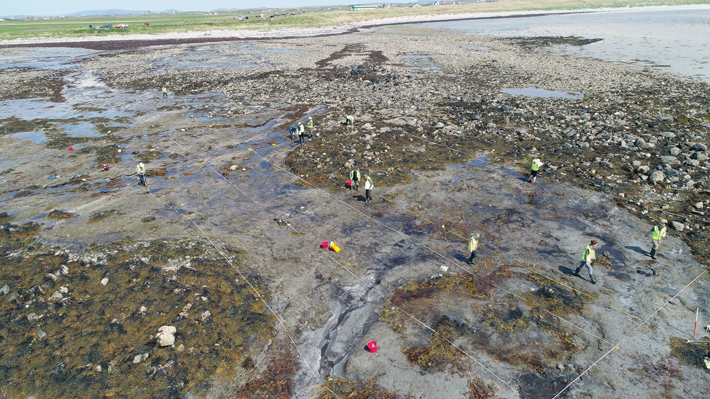
When a local resident noticed a partially fossilized tree protruding from a peat tidal pool on the island of Benbecula in Scotland’s Western Isles, she alerted archaeological authorities. This led to the identification of a 7,000-year old submerged forest. Although Benbecula today is mostly treeless, researchers now know that thousands of years ago it was covered by dense pockets of willow, birch, and Scots pine. “By looking at the wood, pollen, and other microfossils we can learn an enormous amount about what the islands were like before humans arrived and can study the impact of people on the natural vegetation,” says University of St. Andrews archaeologist Joanna Hambly.
As Hambly and her team mapped the location of around 300 trees, they discovered traces of human activity dating to around 1700 B.C., including stone walls, grinding stones, butchered animal bones, and quartz stone tools. “If the butchered animal remains and the quartz tool assemblage are associated with each other—and it looks that way—this would be a very rare survival of a moment frozen in time,” says Hambly. “We can learn about the decision-making processes, technology, and skill of the people who made the tools and processed the animal.”
Celtic Curiosity
By BENJAMIN LEONARD
Thursday, April 11, 2019
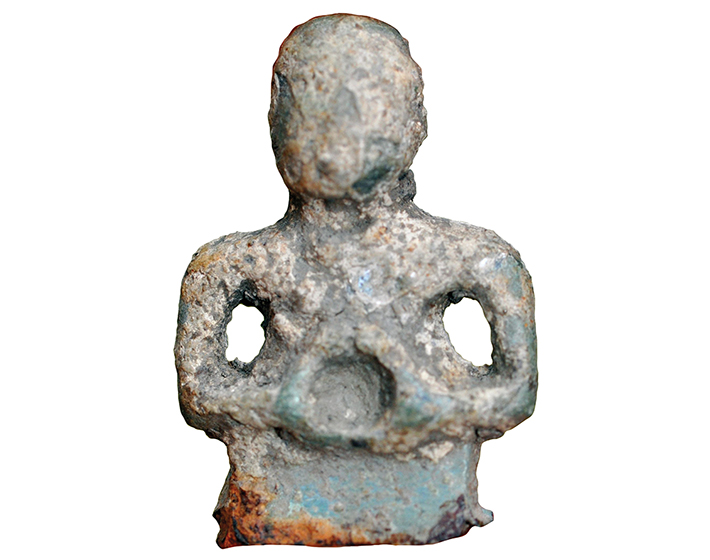 The most intriguing find from recent excavations at the seventeenth-century manor house known as the Wimpole Estate in Cambridgeshire, England, is a second-century A.D. copper alloy figurine of Cernunnos, the Celtic god of fertility, animals, and the underworld. Cernunnos is often shown, as he is here, in a squatting position with a circular torc, or neck ring, in his hands. The figurine formed “part of a utilitarian object, possibly the handle of a Roman spatula for clearing wax tablets,” says archaeologist Paddy Lambert of Oxford Archaeology East. After it broke, he says, the Cernunnos figurine was likely buried near a shrine.
The most intriguing find from recent excavations at the seventeenth-century manor house known as the Wimpole Estate in Cambridgeshire, England, is a second-century A.D. copper alloy figurine of Cernunnos, the Celtic god of fertility, animals, and the underworld. Cernunnos is often shown, as he is here, in a squatting position with a circular torc, or neck ring, in his hands. The figurine formed “part of a utilitarian object, possibly the handle of a Roman spatula for clearing wax tablets,” says archaeologist Paddy Lambert of Oxford Archaeology East. After it broke, he says, the Cernunnos figurine was likely buried near a shrine.
Colonial Cooling
By DANIEL WEISS
Thursday, April 11, 2019
 One surprising effect of European colonization of the Americas was a cooling of the Earth’s climate, researchers at University College London have determined. The team, led by geographer Alexander Koch, estimates the indigenous population of the Americas at the end of the fifteenth century to have been around 60 million. Over the next century, this population declined by some 90 percent, largely due to epidemics introduced by Europeans. As a result, around 215,000 square miles of cultivated land, roughly the area of France, was left fallow and reverted to forest. This sucked up enough carbon dioxide—a greenhouse gas that traps heat in the atmosphere—to lead to cooling.
One surprising effect of European colonization of the Americas was a cooling of the Earth’s climate, researchers at University College London have determined. The team, led by geographer Alexander Koch, estimates the indigenous population of the Americas at the end of the fifteenth century to have been around 60 million. Over the next century, this population declined by some 90 percent, largely due to epidemics introduced by Europeans. As a result, around 215,000 square miles of cultivated land, roughly the area of France, was left fallow and reverted to forest. This sucked up enough carbon dioxide—a greenhouse gas that traps heat in the atmosphere—to lead to cooling.
This process took place amid an extended cold stretch known as the Little Ice Age, which lasted from around 1250 to 1850. Other factors that contributed to cooling during this period included numerous widespread volcanic eruptions and natural fluctuations in solar radiation. But, Koch says, the effects of colonization played a key role in driving temperatures down in the early seventeenth century, adding, “This is thought to be the coolest part of the Little Ice Age.”
Temple of the Flayed Lord
By ZACH ZORICH
Thursday, April 11, 2019
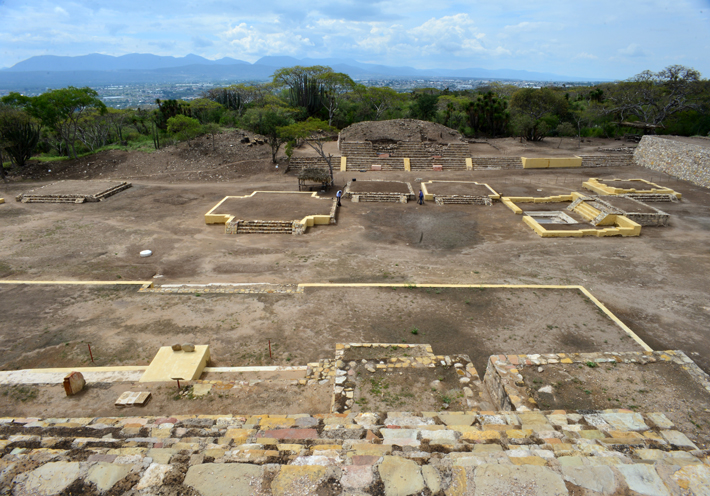 Each spring as new plants sprouted from the ground, the ancient cultures of Mesoamerica, including the Aztecs, understood the event as the earth growing a new skin. This idea was embodied by the god Xipe Totec, who was often depicted wearing a flayed human skin. The deity was thought to cause crops and other plants to grow. Archaeologists led by Noemí Castillo Tejero of Mexico’s National Institute of Anthropology and History recently uncovered the earliest known temple of the “Flayed Lord” at the Ndachjian-Tehuacan archaeological zone in the Mexican state of Puebla.
Each spring as new plants sprouted from the ground, the ancient cultures of Mesoamerica, including the Aztecs, understood the event as the earth growing a new skin. This idea was embodied by the god Xipe Totec, who was often depicted wearing a flayed human skin. The deity was thought to cause crops and other plants to grow. Archaeologists led by Noemí Castillo Tejero of Mexico’s National Institute of Anthropology and History recently uncovered the earliest known temple of the “Flayed Lord” at the Ndachjian-Tehuacan archaeological zone in the Mexican state of Puebla.
The temple complex was built by the Popoloca people around A.D. 900. There, the archaeologists have found a large pyramid with two circular altars where, they believe, prisoners of war were given as sacrifices to honor Xipe Totec after they were killed in gladiatorial combat. They also unearthed two large skulls carved from imported volcanic stone, as well as the torso of a ceramic effigy of the god, which appears to have an extra hand hanging from the left arm. The archaeologists suggest this sculpture represents Xipe Totec wearing the skin of a sacrificial victim, a particularly macabre way to commemorate nature’s cycle of life and death.
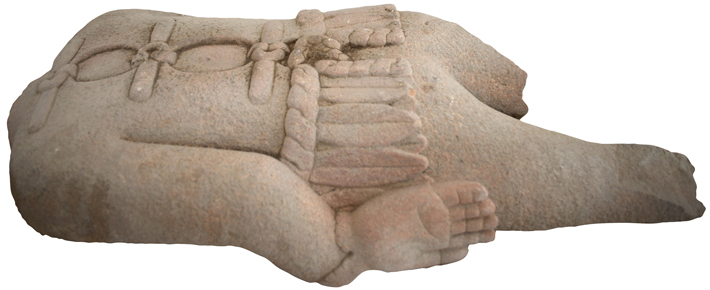
Viking Warrioress
By DANIEL WEISS
Thursday, April 11, 2019
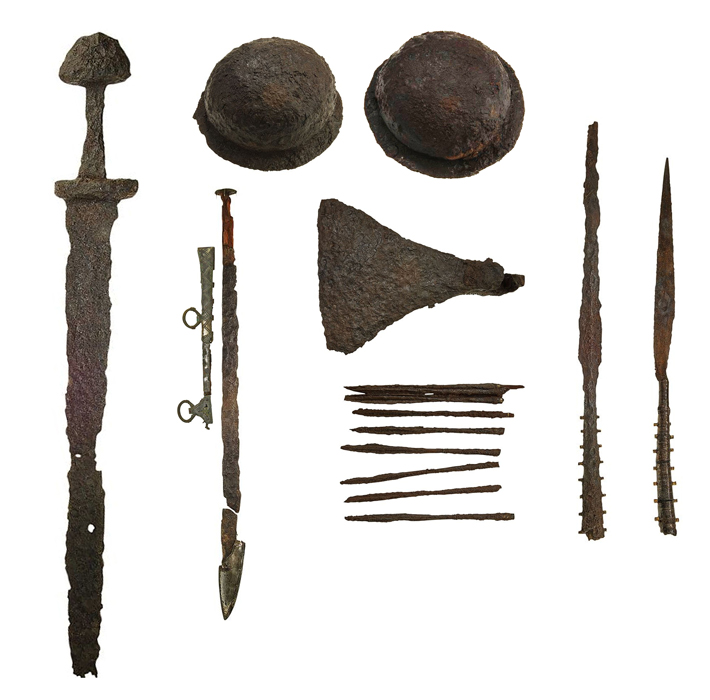 A richly furnished grave excavated in 1878 near the Viking town of Birka in eastern Sweden had long been assumed to hold a powerful male warrior. The grave was equipped with an arsenal of weapons, as well as a set of gaming pieces and a gaming board, which were seen as indications that the deceased was a military commander. A pair of horses was also found in the grave, one bridled as if prepared to ride off into battle once again in the afterlife. More than a century later, several osteologists concluded—and genetic analysis confirmed—that this Viking warrior was actually female.
A richly furnished grave excavated in 1878 near the Viking town of Birka in eastern Sweden had long been assumed to hold a powerful male warrior. The grave was equipped with an arsenal of weapons, as well as a set of gaming pieces and a gaming board, which were seen as indications that the deceased was a military commander. A pair of horses was also found in the grave, one bridled as if prepared to ride off into battle once again in the afterlife. More than a century later, several osteologists concluded—and genetic analysis confirmed—that this Viking warrior was actually female.
When these results were reported in 2017, skeptics wondered whether there had been a testing mistake, or, perhaps, whether the person in the grave had not been a warrior after all. A new review of the evidence led by Neil Price of Uppsala University concludes that the person in the grave was indeed biologically female, and that there is no reason to doubt that she was a warrior in a position of great authority. “Ever since its excavation, the burial has been interpreted as that of a high-status warrior,” says Price. “We think so, too, for exactly the same reasons as everyone else has always thought so—but in light of the new sex determination, she was a female high-status warrior.” 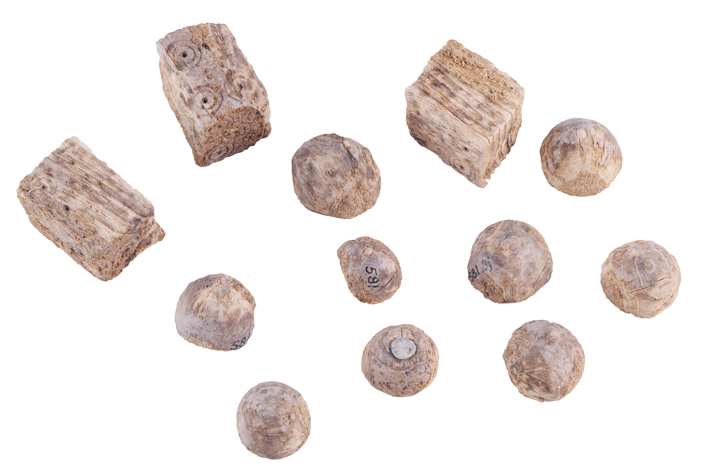
Advertisement
Advertisement
IN THIS ISSUE
Features
Mapping the Past
Bringing Back Moche Badminton
Inside King Tut’s Tomb
Letter from the Dead Sea
From the Trenches
Epic Proportions
Off the Grid
Stabbed in the Back
A Fox in the House
Tigress by the Tail
Family Secrets
Cold War Storage
Marrow of Humanity
Maya Beekeepers
Roman Soldier Scribbles
Understanding Hornet's Fate
Viking Warrioress
Colonial Cooling
Temple of the Flayed Lord
Celtic Curiosity
Submerged Scottish Forest
World Roundup
American whaler petroglyphs, Chinese “elixir of immortality,” Neanderthal footprints, and Ice Age rabbit hunting
Artifact
At some point in the past
Advertisement

Recent Issues
-
 May/June 2024
May/June 2024
-
 March/April 2024
March/April 2024
-
 January/February 2024
January/February 2024
-
 November/December 2023
November/December 2023
-
 September/October 2023
September/October 2023
-
 July/August 2023
July/August 2023
-
 May/June 2023
May/June 2023
-
 March/April 2023
March/April 2023
-
 January/February 2023
January/February 2023
-
 November/December 2022
November/December 2022
-
 September/October 2022
September/October 2022
-
 July/August 2022
July/August 2022
-
 May/June 2022
May/June 2022
-
 March/April 2022
March/April 2022
-
 January/February 2022
January/February 2022
-
 November/December 2021
November/December 2021
-
 September/October 2021
September/October 2021
-
 July/August 2021
July/August 2021
-
 May/June 2021
May/June 2021
-
 March/April 2021
March/April 2021
-
 January/February 2021
January/February 2021
-
 November/December 2020
November/December 2020
-
 September/October 2020
September/October 2020
-
 July/August 2020
July/August 2020
-
 May/June 2020
May/June 2020
-
 March/April 2020
March/April 2020
-
 January/February 2020
January/February 2020
-
 November/December 2019
November/December 2019
-
 September/October 2019
September/October 2019
-
 July/August 2019
July/August 2019
-
 May/June 2019
May/June 2019
-
 March/April 2019
March/April 2019
-
 January/February 2019
January/February 2019
-
 November/December 2018
November/December 2018
-
 September/October 2018
September/October 2018
-
 July/August 2018
July/August 2018
-
 May/June 2018
May/June 2018
-
 March/April 2018
March/April 2018
-
 January/February 2018
January/February 2018
-
 November/December 2017
November/December 2017
-
 September/October 2017
September/October 2017
-
 July/August 2017
July/August 2017
-
 May/June 2017
May/June 2017
-
 March/April 2017
March/April 2017
-
 January/February 2017
January/February 2017
-
 November/December 2016
November/December 2016
-
 September/October 2016
September/October 2016
-
 July/August 2016
July/August 2016
-
 May/June 2016
May/June 2016
-
 March/April 2016
March/April 2016
-
 January/February 2016
January/February 2016
-
 November/December 2015
November/December 2015
-
 September/October 2015
September/October 2015
-
 July/August 2015
July/August 2015
-
 May/June 2015
May/June 2015
-
 March/April 2015
March/April 2015
-
 January/February 2015
January/February 2015
-
 November/December 2014
November/December 2014
-
 September/October 2014
September/October 2014
-
 July/August 2014
July/August 2014
-
 May/June 2014
May/June 2014
-
 March/April 2014
March/April 2014
-
 January/February 2014
January/February 2014
-
 November/December 2013
November/December 2013
-
 September/October 2013
September/October 2013
-
 July/August 2013
July/August 2013
-
 May/June 2013
May/June 2013
-
 March/April 2013
March/April 2013
-
 January/February 2013
January/February 2013
-
 November/December 2012
November/December 2012
-
 September/October 2012
September/October 2012
-
 July/August 2012
July/August 2012
-
 May/June 2012
May/June 2012
-
 March/April 2012
March/April 2012
-
 January/February 2012
January/February 2012
-
 November/December 2011
November/December 2011
-
 September/October 2011
September/October 2011
-
 July/August 2011
July/August 2011
-
 May/June 2011
May/June 2011
-
 March/April 2011
March/April 2011
-
 January/February 2011
January/February 2011
Advertisement






